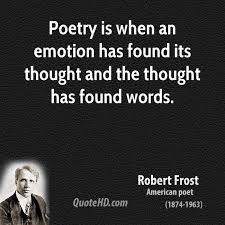
Hannah has hit the ground running! She has her first round of tests this week and has been studying very hard. She has discovered coffee or should I say coffee with all kinds of goodness and sugar added to it. I for one do not understand this infatuation with coffee. (I think for her it is more a social thing than the actual enjoyment of drinking coffee). I love the smell of it brewing, but think it tastes bitter. Give me a good old fashioned chocolate shake anytime. The calories in the chocolate shake are probably similar to a triple chocolate vanilla caramel swirl latte infused with whipped cream! I do wish I would have thought of starting coffee franchises all over the world. I would be blogging from my Aspen home overlooking snow peaked mountains or my Caribbean home overlooking white sand beaches and turquoise water. But alas, I am blogging from my office which real estate agents might describe as "cozy"!
Speaking of cozy, when was the last time you "cozied-up" to a good poem? We are hurling towards the day of the State Test and poetry is one of the standards being tested. Poetry and the message the poet wants to convey is haunting many teachers as they try to teach their students the ins and outs of poetry. I ran across a lesson the other day that may help with that. It is described below and I hope it helps give your students some insight into poetry and the deeper meaning of many poems.
- Select a poem with a deeper message than just the surface one. It should have lots of imagery and figurative language that appeals to the senses. An example might be "Fog" by Carl Sandburg.
- Discuss what it means to use visualization and auditory skills
- Choose a word from the title and have students write their definition of the word and the meanings of the word. The word fog would be chosen if using the poem "Fog". Do Not give students a copy of the poem yet.
- Write connotations of the chosen word. What do you associate with ______or what do you feel when you think about __________?
- Have students draw what they are feeling, hearing, and/or visualizing as you read the poem. Read the poem as many times as needed. Then give the students 3 minutes to draw/color their interpretation of the poem. For example, after hearing "Fog" they might draw fog covering the harbor or city. They many even draw a "foggy" cat.
- The students now get a copy of the poem to read through again.
- Discuss the obvious meaning and then the deeper meaning of the poem. Have them write about their interpretation of the poem.
- Share and discuss these with the class.
Hope you find this lesson helps your students understand poetry a little more.
Until next time, cozy up with a good book of poetry and a good cup of coffee (or milk shake)!
Happy Reading!